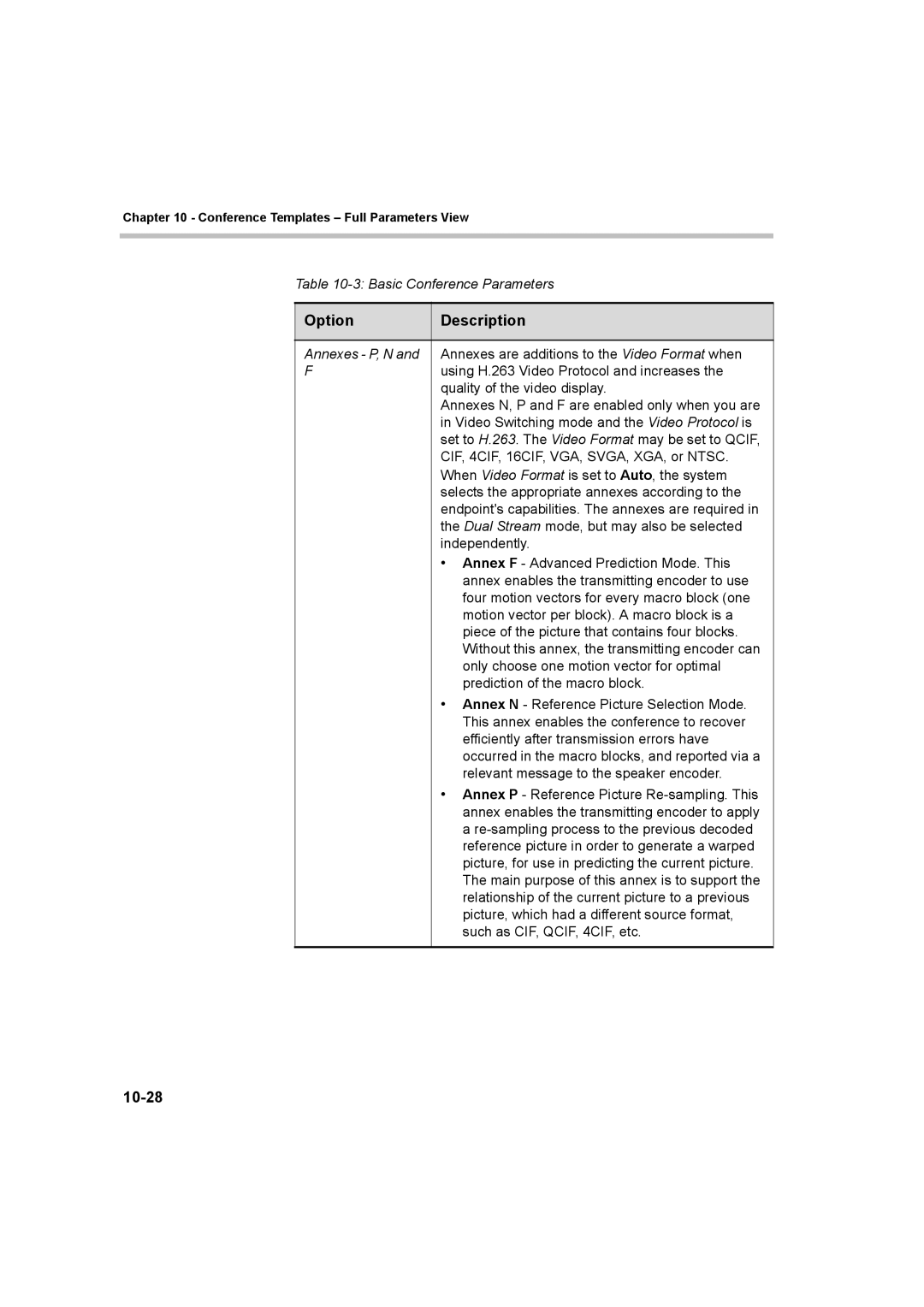Chapter 10 - Conference Templates – Full Parameters View
Table
Option | Description |
|
|
Annexes - P, N and | Annexes are additions to the Video Format when |
F | using H.263 Video Protocol and increases the |
| quality of the video display. |
| Annexes N, P and F are enabled only when you are |
| in Video Switching mode and the Video Protocol is |
| set to H.263. The Video Format may be set to QCIF, |
| CIF, 4CIF, 16CIF, VGA, SVGA, XGA, or NTSC. |
| When Video Format is set to Auto, the system |
| selects the appropriate annexes according to the |
| endpoint's capabilities. The annexes are required in |
| the Dual Stream mode, but may also be selected |
| independently. |
| • Annex F - Advanced Prediction Mode. This |
| annex enables the transmitting encoder to use |
| four motion vectors for every macro block (one |
| motion vector per block). A macro block is a |
| piece of the picture that contains four blocks. |
| Without this annex, the transmitting encoder can |
| only choose one motion vector for optimal |
| prediction of the macro block. |
| • Annex N - Reference Picture Selection Mode. |
| This annex enables the conference to recover |
| efficiently after transmission errors have |
| occurred in the macro blocks, and reported via a |
| relevant message to the speaker encoder. |
| • Annex P - Reference Picture |
| annex enables the transmitting encoder to apply |
| a |
| reference picture in order to generate a warped |
| picture, for use in predicting the current picture. |
| The main purpose of this annex is to support the |
| relationship of the current picture to a previous |
| picture, which had a different source format, |
| such as CIF, QCIF, 4CIF, etc. |
|
|
